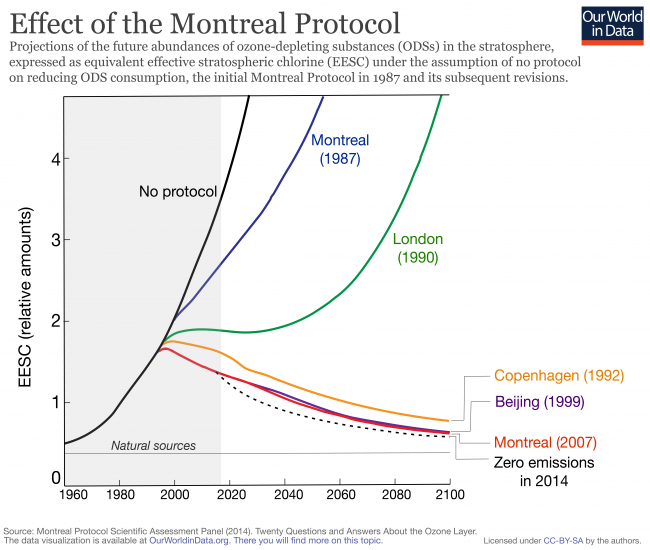The ozone layer plays a vital role in making the planet habitable for us and other species. High in the atmosphere – between 10 to 50 kilometers above the earth’s surface – the ozone layer absorbs most of the sun’s ultraviolet radiation.
But, during the 1970s, ‘80s, and ‘90s, humans were emitting large quantities of substances that depleted the ozone layer. This led to the creation of ozone holes at the earth’s poles, exposing life to higher levels of ultraviolet radiation and increasing the risks of skin cancer in humans.
During the 1980s, the world came together to form an international agreement to reduce – and eventually eliminate – emissions of these depleting substances. The political agreements were very effective. Since then, global emissions have fallen by more than 99%.
The ozone holes have stopped growing and are now starting to close.
This page includes all of our data, visualizations, and writing on the ozone layer, its depletion, and its path to recovery.





